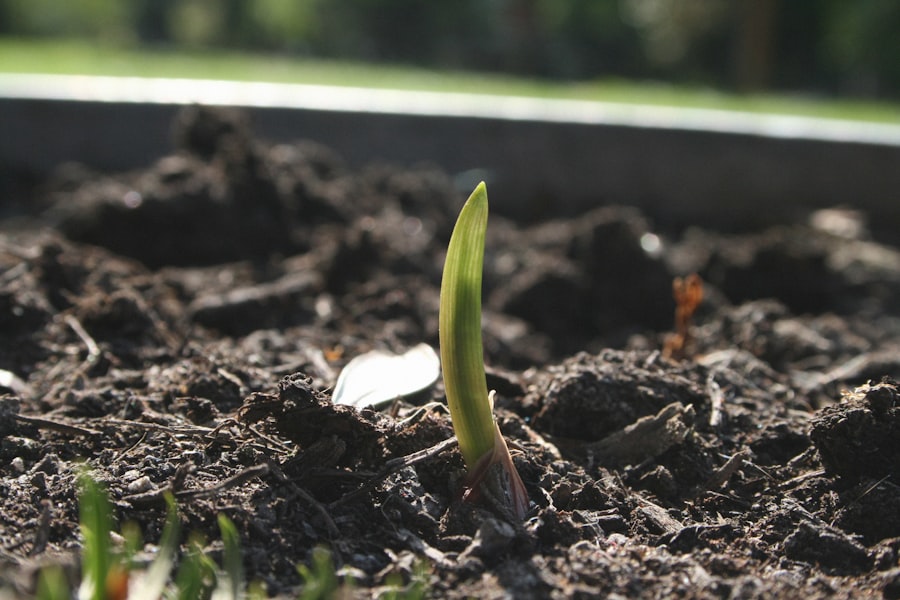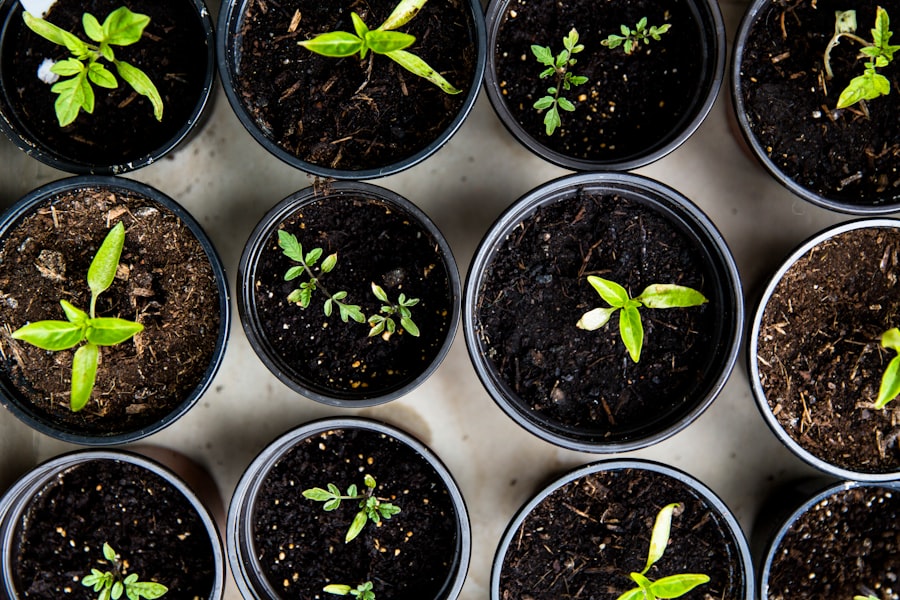Using ashes in the garden offers a multitude of benefits that can enhance soil health and plant growth. One of the primary advantages is their rich mineral content, which includes essential nutrients such as potassium, calcium, and magnesium. These minerals play a crucial role in plant development, contributing to stronger root systems, improved flowering, and increased resistance to diseases.
For instance, potassium is vital for photosynthesis and helps regulate water uptake in plants, while calcium strengthens cell walls, promoting overall plant vigor. In addition to their nutrient profile, ashes can also improve soil structure. When incorporated into heavy clay soils, they can help break up compacted particles, enhancing aeration and drainage.
Conversely, in sandy soils, ashes can improve moisture retention. This dual capability makes ashes a versatile amendment for various soil types. Furthermore, ashes can attract beneficial microorganisms that contribute to a healthy soil ecosystem, fostering a more balanced environment for plant growth.
Key Takeaways
- Using ashes in the garden can provide essential nutrients to plants and improve soil structure.
- To safely collect and store ashes for garden use, make sure they are completely cool and dry before storing in a metal container with a tight-fitting lid.
- Ashes are rich in potassium, calcium, and other trace minerals, making them a valuable nutrient source for plants.
- When using ashes as a soil amendment, sprinkle a thin layer over the soil and mix it in thoroughly to avoid concentrated spots that may harm plants.
- Incorporating ashes into compost can help balance the pH levels and improve the overall quality of the compost.
How to Safely Collect and Store Ashes for Garden Use
Collecting ashes for garden use requires careful consideration to ensure safety and effectiveness. The first step is to gather ashes from clean-burning sources, such as hardwoods or untreated paper products. Avoid using ashes from softwoods, as they contain higher levels of resin and may introduce unwanted chemicals into the garden.
Additionally, ashes from burned materials like treated wood or charcoal briquettes should be strictly avoided due to potential toxic substances. Once collected, it is essential to store the ashes properly to maintain their quality. Use a metal container with a tight-fitting lid to prevent moisture absorption and keep pests at bay.
It’s advisable to label the container clearly to avoid confusion with other materials.
Store the ashes in a cool, dry place away from direct sunlight. This will help preserve their nutrient content and prevent them from becoming clumpy or losing their effectiveness over time.
Understanding the Nutrient Content of Ashes

The nutrient content of ashes varies significantly depending on the type of material burned. Generally, wood ash contains approximately 1-5% potassium, 1-3% phosphorus, and 20-30% calcium carbonate. These elements are crucial for plant health; potassium aids in water regulation and enzyme activation, phosphorus supports root development and flowering, while calcium helps prevent blossom end rot in tomatoes and peppers.
Moreover, wood ash is alkaline in nature, which means it can help raise soil pH levels. This characteristic makes it particularly beneficial for acidic soils that may hinder plant growth. However, it’s important to conduct a soil test before applying ashes to determine the current pH level and nutrient status.
This ensures that the application of ashes will complement existing soil conditions rather than disrupt them.
Using Ashes as a Soil Amendment
Incorporating ashes into garden soil can significantly enhance its fertility and structure. When using ashes as a soil amendment, it is crucial to apply them in moderation. A general guideline is to use about 5-10 pounds of wood ash per 100 square feet of garden space.
This amount can vary based on the specific needs of the plants being grown and the existing soil conditions. To apply ashes effectively, spread them evenly over the soil surface and lightly till them into the top few inches of soil. This method ensures that the nutrients are accessible to plant roots while preventing potential nutrient leaching during heavy rains.
Additionally, mixing ashes with compost before application can further enhance their benefits by creating a balanced nutrient profile that supports microbial activity in the soil.
Incorporating Ashes into Compost
Adding ashes to compost can be an excellent way to recycle waste while enriching the compost mix with valuable nutrients. However, moderation is key; too much ash can lead to an imbalance in the compost’s carbon-to-nitrogen ratio. A good rule of thumb is to limit ash additions to about 5-10% of the total compost volume.
This ensures that the compost remains aerated and retains its ability to decompose effectively. When incorporating ashes into compost, it’s best to mix them with other carbon-rich materials like dried leaves or straw. This helps maintain a balanced composition and prevents clumping.
Additionally, mixing ashes with nitrogen-rich materials such as kitchen scraps or grass clippings can create a more effective composting environment. The result is a nutrient-dense compost that can be used to enrich garden beds or potting mixes.
Using Ashes to Adjust Soil pH

One of the most significant benefits of using wood ash in the garden is its ability to adjust soil pH levels. Many gardeners face challenges with acidic soils that can inhibit plant growth and nutrient availability. Wood ash acts as a natural liming agent, helping to raise pH levels and create a more neutral environment conducive to a wide range of plants.
Before applying wood ash for pH adjustment, it’s essential to conduct a soil test to determine the current pH level. If the soil is found to be too acidic (typically below 6.0), applying wood ash can help raise it toward a more neutral range (6.0-7.0). The application rate will depend on the initial pH level; generally, 5-10 pounds per 100 square feet is recommended for moderate adjustments.
After application, it’s advisable to retest the soil pH after several months to monitor changes and make further adjustments if necessary.
Precautions for Using Ashes in the Garden
While using ashes in the garden has numerous benefits, there are several precautions that gardeners should take into account. First and foremost, it’s crucial to avoid using ashes from treated wood or materials that may contain harmful chemicals or heavy metals. These substances can leach into the soil and potentially harm plants or contaminate food crops.
Additionally, excessive application of wood ash can lead to nutrient imbalances in the soil, particularly an overabundance of potassium or an increase in soil pH beyond optimal levels for certain plants. Therefore, it’s essential to apply ashes judiciously and monitor their effects on soil health over time. Regular soil testing can help ensure that nutrient levels remain balanced and that pH adjustments do not adversely affect plant growth.
Other Creative Ways to Use Ashes in the Garden
Beyond traditional applications as a soil amendment or compost ingredient, there are several creative ways to utilize ashes in the garden. For instance, wood ash can be sprinkled around plants as a natural pest deterrent; its gritty texture can deter slugs and snails from reaching tender seedlings. Additionally, some gardeners have found success using ashes as a barrier against certain insects when applied in a ring around plants.
Another innovative use for wood ash is as a natural source of silica for plants like tomatoes and cucumbers, which benefit from this mineral for improved structural integrity and disease resistance. By mixing wood ash into potting soil or directly into planting holes for these crops, gardeners can provide an additional boost that may enhance overall yield and health.
The Environmental Impact of Using Ashes in the Garden
Utilizing wood ash in gardening practices not only benefits individual gardens but also has positive implications for environmental sustainability. By recycling waste materials from wood burning or other sources, gardeners contribute to reducing landfill waste while simultaneously enriching their soils naturally. This practice aligns with sustainable gardening principles that emphasize resource conservation and ecological balance.
Moreover, using wood ash as a natural fertilizer reduces reliance on synthetic fertilizers that can contribute to water pollution through runoff. When applied responsibly, wood ash provides essential nutrients without the risk of chemical leaching into waterways, promoting healthier ecosystems both within gardens and beyond.
When considering how best to use ashes in different types of gardens, it’s important to tailor applications based on specific plant needs and garden goals. In vegetable gardens, for example, incorporating wood ash into planting holes for crops like tomatoes or peppers can provide essential nutrients while helping to prevent blossom end rot due to its calcium content. In flower gardens, particularly those featuring acid-loving plants such as azaleas or rhododendrons, caution should be exercised when applying wood ash since it raises soil pH levels.
Instead of direct application around these plants, consider using ashes in areas designated for more alkaline-tolerant species like daisies or sunflowers where they can thrive with the added nutrients without adverse effects on pH balance.
Frequently Asked Questions about Using Ashes in the Garden
Many gardeners have questions regarding the use of ashes in their gardening practices. One common inquiry is whether all types of ashes are suitable for garden use; while wood ash is generally safe and beneficial, ashes from coal or treated materials should be avoided due to potential toxins. Another frequent question pertains to how often ashes should be applied; typically, once or twice a year is sufficient for most gardens, depending on soil tests and specific plant needs.
Gardeners often wonder about the best method for applying ashes—spreading them evenly over the soil surface and lightly tilling them in is usually recommended for optimal nutrient distribution. Understanding these aspects can help gardeners make informed decisions about incorporating ashes into their gardening practices effectively while maximizing benefits for their plants and overall soil health.
If you’re interested in learning more about using organic materials in your garden, you may want to check out this comprehensive guide on gardening from Chiku’s Garden Exploring the Joys of Gardening: A Comprehensive Guide. This article provides valuable tips and information on how to make the most of your gardening experience. Additionally, if you’re looking for alternative fertilizers, you might want to read about the benefits of using chicken dung as organic fertilizer in this article Maximizing Growth: Harnessing the Power of Chicken Dung as Organic Fertilizer. And if you’re concerned about diseases affecting your evergreen trees, be sure to educate yourself on common evergreen trees diseases in this informative article Common Evergreen Trees Diseases You Should Know.
FAQs
What are the benefits of using ashes in the garden?
Using ashes in the garden can help to raise the pH level of acidic soil, provide essential nutrients such as potassium and calcium, and deter pests like slugs and snails.
How should ashes be applied in the garden?
Ashes should be applied sparingly in the garden, as excessive amounts can harm plants. It is best to sprinkle a thin layer of ashes around the base of plants or mix them into the soil.
Are there any precautions to take when using ashes in the garden?
It is important to avoid using ashes from materials like treated wood or coal, as these can contain harmful chemicals. Additionally, ashes should not be applied to areas where acid-loving plants are growing.
Can all types of plants benefit from the use of ashes in the garden?
While many plants can benefit from the nutrients found in ashes, some acid-loving plants like azaleas, rhododendrons, and blueberries may be negatively affected by the increase in soil pH caused by ashes.
How often should ashes be applied in the garden?
Ashes can be applied to the garden once or twice a year, depending on the specific needs of the soil and plants. It is important to monitor the pH level of the soil and adjust the frequency of ash application accordingly.

